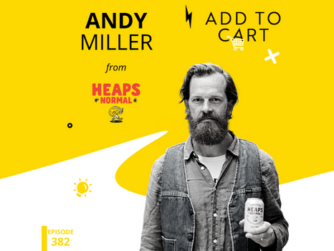In this episode of Add To Cart, we are joined by MIchael Tutek, Founder and CEO of Preezie. Michael actually had the idea for his business when he was a fifteen year old salesperson at The Good Guys. He held onto the concept and built it into what’s now known as Preezie – a guided conversion and discovery platform for online retailers. In today’s chat, he tells us the story of how his idea as a fifteen year old turned into a solution used by established retailers such as Baby Bunting, Lorna Jane, Luxury Escapes, Bevilles and Blue Bungalow. He also shares why they have a psychologist on the board who recommended slowing down the experience for customers to increase conversion rate and why he thinks the death of third party cookies will actually help real personalisation.
“You’ve just got to keep in mind, all your customers are human beings, they always will be human beings““
Michael Tutek
Questions answered in this episode include…
- What role does psychology play in understanding the online customer experience?
- What kind of data do you need to surface relevant results?
- How does Preezie increase conversion rates?
Who doesn’t need a bucket of water alarm clock?!
So the story goes, believe it or not, I was working at like 12, 13 years old. My old man is a brick layer and legit, real story, he used to throw water on me in the morning to help wake me up. And I just thought, you know what? I can’t do this old school Croatian mentality. So I said, you know what, 14 years, nine months old, legally allowed to, I got a job with The Good Guys, sweeping the floors. Cause this means that Tata doesn’t wake me up in the morning with water.
So I got that job and I was pretty tall for my age. So the owner, Greg said, hey did you want to get sales experience? And I thought, yeah, okay. Why not? And I’ve always loved psychology. I’ve always loved tech and I’ve always loved sales. And on the sales floor, it was really interesting because I was in a meeting one day and they were talking about the in store conversion, and they were saying, hey, you know, last year, last month, our in-store conversion was 30%, 40%. A hundred people walk in, 40 walk out with the product.
And then I remember reading about their on line. And at the time their online was like, 0.7., this is going back many, many years. And I thought, well, what’s the difference? What is the fundamental difference? Like you’re not, you’re not getting a fridge and putting it in the back of your car now. So it’s not getting it now, delivery services are so quick. It’s not really about having it today. So I really did a lot of research and I effectively found the biggest difference was that sales assistant.
You can call it online personalization, but in reality, it was just walking in talking to a sales assistant, helping them help you navigate the range and feeling confident to buy. Hey, I’ve sold X of these or this is perfect for you because of X, Y, and Z. And I just thought why doesn’t anyone do this online? It just baffled me. And I mean, I’m talking, I’m like 16, 17 years old now. And I just thought like, this is going back then, I must do this one day anyways. So, I effectively just started playing with the idea 10 years ago, but you know, I was in uni, so I finished uni. I became an engineer, saved up every penny I could, and then eventually just launched the concept. I just said, I want to do this idea that I thought about many, many years ago, to bring that in store experience online.
Products made easy – best application
The way to think about it is if you’ve got a product – even like Bevells Jewellery with jewellery, Baby Bunting, car seats, Lorna Jane with functional clothing – if you’ve got a product that requires some consideration, that’s a really great use case. So I’ll give you another example, one of our customers Nick’s Wines.
Now, if you look at a bottle of wine…and I actually approached Nicks Wines because I went to my mum’s house and I’m not a connoisseur of wine. I like it. Who doesn’t like wine? But I don’t know what things are. So, you know, I drank it, it smelt really heavy. I saw that it was red, you know, she eats a lot of fish and I was like, cool. Mother’s day, I want to buy her a bottle of wine. But you can’t go on their website and understand, what is a Shiraz? Is that heavy? Is that medium? Is that light? Does it pair well with fish? Hi, I’m a startup. So give me like a bottle from $15 to $25 and, mum likes supporting locals, so give me something local.
So the best way to think about application, the best applications are ones that have some form of consideration, like Baby Bunting, car seats, prams. You think about that before you buy it. If you’re looking at…here is a blue pen. Here is a red pen or black pen. There’s very little consideration, but you know, things like jewellery, colours, sizes, even for example, we work with Curvy Bras and they obviously have heaps of different sizes. Something like 80% of women don’t wear the right bra size. How do you know, without putting it on I’m a 14 F. It’s tight around the straps, what is my right size?
So think about it, when you’ve got that consideration set and that consideration phase, that’s where we’re just prime.
Customers are human beings!
So for anyone that uses Preezie on one of our customer’s websites, you’ll notice when you press ‘get results’, there is a loading GIF and it says ‘analyzing your data’. Now we do a lot of smarts in that process, but it’s very fast. So only a couple hundred milliseconds. Chris (our psychology expert) said listen, there’s a thing called perceived effort or heuristic effort. What it means is, if a customer tells you a little bit about themselves or puts effort into your system, if you show them results too quickly, like instantaneously, they subconsciously will not feel like you have actually taken into consideration their inputs.
And I said, but people want quick load speed? People want to know that you’ve done something smart and you’ve considered it. So what we did is we integrated an artificial delay, configurable, and we put in a loading GIF that actually tells the customer it’s cross-referencing your results, putting some product recommendations together. Then, engagement, click through rates, conversions, all went up after and it’s just crazy. Cause you know, sometimes when we interview UX experts and ask them what’s better, loading GIF of 500 milliseconds or a loading gif of four seconds, they all say, well, most of them say, you know, 500 milliseconds, but from an actual conversion and data point of view, it actually doesn’t.
I think part of it is, you know, we just got to keep in mind, all your customers are human beings. They always will be human beings. Thinking about it like a human, most people aren’t familiar with elastic search, they don’t understand, or probably unlikely to know that you can cross reference 7,000 products, all with 16 different variables and a bunch of leucine rules in the space of 300 milliseconds.




